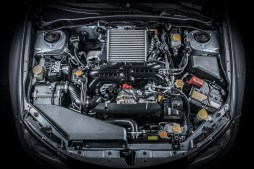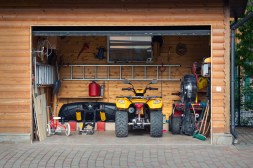Compact vs. Full-Size: What’s the Best Crossover for Urban Adventures?
Urban driving presents unique challenges and opportunities, making the choice of vehicle paramount for city dwellers. Crossovers have become a popular option due to their blend of compact size, spacious interiors, and versatility. In this article, we will explore the differences between compact and full-size crossovers to help you decide which is best suited for your urban adventures.
Understanding Compact Crossovers
Compact crossovers are designed with city driving in mind. Typically smaller than their full-size counterparts, these vehicles offer improved maneuverability and parking ease in crowded urban environments. Models like the Honda HR-V or Mazda CX-30 are perfect examples of compact crossovers that provide a comfortable ride without sacrificing cargo space or passenger comfort. Their size allows drivers to navigate narrow streets and tight parking spots more efficiently than larger vehicles.

Advantages of Full-Size Crossovers
Full-size crossovers, such as the Ford Explorer or Chevrolet Traverse, come with enhanced features that appeal to families or those needing extra room for gear. These vehicles offer increased passenger capacity, often comfortably seating up to seven passengers. Additionally, they typically feature more powerful engines for better performance on highways leading in and out of city centers. However, these benefits come at a cost—their larger size can make them less practical for navigating congested traffic and finding parking.
Fuel Efficiency Comparison
When considering urban driving needs, fuel efficiency is another critical factor between compact and full-size crossovers. Generally speaking, compact models tend to consume less fuel due to their smaller engines and lighter weight—an essential consideration given rising fuel prices in many urban areas. For example, compact SUVs may average around 28 miles per gallon compared to 20-25 mpg for many full-size options. This difference can significantly impact your overall costs in a city where frequent stop-and-go driving is common.
Technology Features That Enhance City Driving
Both types of crossovers come equipped with modern technology designed to enhance safety and convenience during city drives. Features such as rearview cameras, parking sensors, adaptive cruise control, blind-spot monitoring systems are commonly found across both categories but may vary by model year or trim level. Compact crossovers often include advanced infotainment systems that allow seamless smartphone integration—a crucial feature for navigating through busy streets using GPS apps.
The Verdict: Which Crossover Fits Your Urban Lifestyle?
Ultimately, the choice between a compact versus a full-size crossover depends on your individual lifestyle needs. If you prioritize agility in tight spaces over sheer capacity—especially if you’re commuting solo or with one passenger—a compact crossover may be ideal for you. On the other hand, if family outings or transporting multiple passengers regularly form part of your routine while still needing some versatility—considering a full-sized option might be worth it despite its larger footprint.
In conclusion, understanding how each type of crossover aligns with your urban adventures will empower you to make an informed decision that enhances both practicality and enjoyment during your drives around town.
This text was generated using a large language model, and select text has been reviewed and moderated for purposes such as readability.











